Results 3,151 to 3,160 of 12096
Thread: Anandtech News
-
07-15-13, 09:01 AM #3151
Anandtech: Welcome to the Preview Release of Microsoft 2014
Today Microsoft released a couple of major announcements regarding the restructuring of their entire business. The complete One Microsoft email from Steve Ballmer along with an internal memo entitled Transforming Our Company are available online at Microsoft’s news center, but what does it all really mean? That’s actually a bit difficult to say; clearly times are changing and Microsoft needs to adapt to the new environment, and if we remove all of the buzzwords and business talk, that’s basically what the memo and email are about. Microsoft calls their new strategy the “devices and services chapter” of their business, which gives a clear indication of where they’re heading.
We’ve seen some of this already over the past year or so, in particular the Microsoft Surface and Surface Pro devices are a departure from the way Microsoft has done things in the past – though of course we had other hardware releases like the Xbox, Xbox 360, Zune, etc. We’ve discussed this in some of our reviews as well, where the traditional PC markets are losing ground to smartphones, tablets, and other devices. When companies like Apple and Google are regularly updating their operating systems, in particular iOS and Android, the old model of rolling out a new Windows operating system every several years is no longer sufficient. Depending on other companies for the hardware that properly showcases your platform can also be problematic when one of the most successful companies of the last few years (Apple Computer) controls everything from the top to bottom on their devices.
There’s also the factor of cost; when companies are getting Android OS for free, minus the groundwork required to get it running on your platform, charging $50 or $100 for Windows can be a barrier to adoption. When Microsoft talks about a shift towards devices and services, they are looking for new ways to monetize their business structure. The subscription model for Office 365 is one example of this; rather than owning a copy of office that you can use on one system, you instead pay $100 for the right to use Office 365 on up to five systems for an entire year. This sort of model has worked well for the antivirus companies not to mention subscription gaming services like World of WarCraft, EverQuest, etc., so why not try it for Office? I have to wonder if household subscriptions to Windows are next on the auction block.
One of the other topics that Microsoft gets into with their memo is the need for a consistent user experience across all of the devices people use on a daily basis. Right now, it’s not uncommon for people to have a smartphone, tablet, laptop and/or desktop, a TV set-top box, and maybe even a gaming console or two – and depending on how you are set up, each of those might have a different OS and a different user interface. Some people might not mind switching between the various user interfaces, but this is definitely something that I’ve heard Apple users mention as a benefit: getting a consistent experience across your whole electronic ecosystem. Apple doesn’t get it right in every case either, but I know people that have MacBook laptops, iPads/iPods and iPhones, Apple TV, iTunes, and an AirPort Extreme router, and they are willing to pay more for what they perceive as a better and easier overall experience.
Windows 8 was a step towards that same sort of ecosystem, trying to unify the experience on desktops, laptops, smartphones, tablets, and the Xbox One; some might call it a misstep, but regardless Microsoft is making the effort. “We will strive for a single experience for everything in a person’s life that matters. One experience, one company, one set of learnings, one set of apps, and one personal library of entertainment, photos and information everywhere. One store for everything.” It’s an ambitious goal, and that sort of approach definitely won’t appeal to everyone [thoughts of Big Brother…]; exactly how well Microsoft does in realizing this goal is going to determine how successful this initiative ends up being.
One of the other thoughts I’ve heard increasingly over the past year or two is that while competition is in theory good for the consumer, too much competition can simply result in confusion. The Android smartphone and tablet offerings are good example of this; which version of Android are you running, and which SoC powers your device? There are huge droves of people that couldn't care less about the answer to either question; they just want everything to work properly. I’ve heard some people jokingly (or perhaps not so jokingly) suggest that we would benefit if more than one of the current SoC companies simply “disappeared” – and we could say the same about some of the GPU and CPU vendors that make the cores that go into these SoCs. Again, Microsoft is in a position to help alleviate some of this confusion with their software and devices; whether they can manage to do this better than some of the others that have tried remains to be seen.
However you want to look at things, this is a pretty major attempt at changing the way Microsoft functions. Can actually pull this all off, or is it just so many words? Thankfully, most of us have the easy job of sitting on the sidelines and taking a “wait and see” approach. Steve Ballmer notes, “We have resolved many details of this org, but we still will have more work to do. Undoubtedly, as we involve more people there will be new issues and changes to our current thinking as well. Completing this process will take through the end of the calendar year as we figure things out and as we keep existing teams focused on current deliverables like Windows 8.1, Xbox One, Windows Phone, etc.”
Whatever happens to Microsoft over the coming year or two, these are exciting times for technology enthusiasts. Microsoft has been with us for 37 years now, and clearly they intend to stick around for the next 37 as well. Enjoy the ride!
More...
-
07-15-13, 09:01 AM #3152
Anandtech: Some Thoughts About the Lumia 1020 Camera System
Today Nokia announced their new flagship smartphone, the Lumia 1020. I’ve already posted about the announcement and details, and what it really boils down to is that the Lumia 1020 is like a better PureView 808 inside a smaller Lumia 920 chassis. In fact, a quick glance at the About page on the Lumia 1020 shows exactly how much the 1020 is the 808’s spiritual successor – it’s erroneously named the Nokia 909.
Anyhow I thought it worth writing about the imaging experience on the Lumia 1020 in some detail since that’s the most important part of the device. We’re entering this interesting new era where the best parts of smartphone and camera are coming together into something. I’ve called them connected cameras in the past, but that really only goes as far as describing the ability to use WiFi or 3G, these new devices that also work as phones are something more like a smartphone with further emphasized imaging. Think Galaxy S4 Zoom, PureView 808, and now Lumia 1020. For Nokia the trend isn’t anything new, for the rest of the mobile device landscape to be following suit, is.
Once again however, Nokia has set a new bar with the Lumia 1020 – it combines the 41 MP oversampling and lossless zoom features from the PureView 808 with Optical Image Stabilization (OIS) and WP8 from the Lumia 920 / 925 / 928 series. And it does so without making the device needlessly bulky, it’s actually thinner and lighter than the Lumia 920. When I heard that Nokia was working on getting the 41 MP profile camera I have to admit I pictured something resembling the PureView 808 with the same relatively large bulge, but just running Windows Phone. The camera region still protrudes, sure, but the extent of the protrusion isn’t nearly as big as that of the 808.
To get that thickness down, Nokia went to 1.12 micron square pixels, as opposed to the 1.4 micron pixels on the PureView 808. This results in a smaller overall sensor (from 1/1.2“ in the 808 to 1/1.5” in the 1020) which in turn lets the optical designers make a thinner system – it’s entirely physics constrained.Camera Emphasized Smartphone Comparison Samsung Galaxy Camera (EK-GC100) Nokia PureView 808 Samsung Galaxy S4 Zoom Nokia Lumia 1020 CMOS Resolution 16.3 MP 41 MP 16.3 MP 41 MP CMOS Format 1/2.3", 1.34µm pixels 1/1.2", 1.4µm pixels 1/2.3", 1.34µm pixels 1/1.5", 1.12µm pixels Lens Details 4.1 - 86mm (22 - 447 35mm equiv)
F/2.8-5.9
OIS8.02mm (28mm 35mm equiv)
F/2.44.3 - 43mm (24-240 mm 35mm equiv)
F/3.1-F/6.3
OISPureView 41 MP, BSI, 6-element optical system, xenon flash, LED, OIS (F/2.2, 25-27mm 35mm eff) Display 1280 x 720 (4.8" diagonal) 640 x 360 (4.0" diagonal) 960 x 540 (4.3-inch) 1280 x 768 (4.5-inch) SoC Exynos 4412 (Cortex-A9MP4 at 1.4 GHz with Mali-400 MP4) 1.3 GHz ARM11 1.5 GHz Exynos 4212 1.5 GHz Snapdragon MSM8960 Storage 8 GB + microSDXC 16 GB + microSDHC 8 GB + microSDHC 32 GB Video Recording 1080p30, 480p120 1080p30 1080p30 1080p30 OS Android 4.1 Symbian Belle Android 4.2 Windows Phone 8 Connectivity WCDMA 21.1 850/900/1900/2100, 4G, 802.11a/b/g/n with 40 MHz channels, BT 4.0, GNSS WCDMA 14.4 850/900/1700/1900/2100, 802.11b/g/n, BT 3.0, GPS WCDMA 21.1 850/900/1900/2100, 4G LTE SKUs, 802.11a/b/g/n with 40 MHz channels, BT 4.0, GNSS Quad band edge, WCDMA 42 850/900/1900/2100
LTE bands 1,3,7,20,8
To make up for the loss of sensitivity, Nokia moved to now-ubiquitous BSI (Back Side Illumination) pixels for the Lumia 1020. I didn’t realize it before, but the 808 used an FSI (Front Side Illumination) sensor. Nokia tells me that the result is the same level of sensitivity between the two at the sensor level, add in OIS and the Lumia 1020 will likely outperform the 808 in low light.
At an optical level the Lumia 1020 is equally class-leading. The 1020 moves to an F/2.2 system over the 808’s F/2.4, and is a 6-element system (5 plastic aspheric, 1 glass), with that front objective being entirely glass. Nokia claims to have improved MTF on this new system even more at the edges and resolves enough detail to accommodate those tiny 1.12 micron pixels. Nokia has also moved to a second generation of OIS for the Lumia 1020 – it still is a barrel shift, but instead of pushing the module around with electromagnets, the system now uses very small motors to counteract movements.
The Lumia 1020 also has two flashes - an LED for video and AF assist, and xenon for freezing motion and taking stills. Although I still hesitate to use direct flash on any camera, even if it’s xenon and not the hideously blue cast of a white LED, this will help the 1020 push considerably into completely dark territory where you just need some on-camera lighting to get a photo. A lot of the thickness constraints of the 808 I’m told were due to the capacitor for the xenon, the 1020 moves to a flat capacitor.
Nokia laid out the entire optical stack in the open in numerous demos and meetings at their event. The module in the 1020 is big compared even to Nokia’s previous modules. It looks positively gigantic compared to the standard sized commodity modules that come in other phones. The amount of volume that Nokia dedicates to imaging basically tells the story.
One of my big questions when I heard that 41 MP PureView tech was coming to Windows Phone was what the silicon implementation would look like, since essentially no smartphone SoCs out of box support a 41 MP sensor, certainly none of the ones Windows Phone 8 GDR2 currently supports. With the PureView 808, Nokia used a big dedicated ISP made by Broadcom to do processing. On the Lumia 1020, I was surprised to learn there is no similar dedicated ISP (although my understanding is that it was Nokia’s prerogative to include one), instead Nokia uses MSM8960 silicon for ISP. Obviously the MSM8960 is only specced for up to 20 MP camera support, Nokia’s secret sauce is making this silicon support 41 MP and the PureView features (oversampling, subsampling, lossless on the fly zoom) through collaboration with Qualcomm and rewriting the entire imaging stack themselves. I would not be surprised to learn that parts of this revised imaging solution run on Krait or Hexagon DSP inside 8960 to get around the limitations of its ISP. I suspect the Lumia 1020 includes 2 GB of LPDDR2 partly to accommodate processing those 41 MP images as well. Only with the next revision of Windows Phone (GDR3) will the platform get support for MSM8974 which out of box supports up to 55 MP cameras.
Of course the hardware side is a very interesting one, but the other half of Nokia’s PureView initiative is software features and implementation. With the Lumia 1020, Nokia has done an end-run around the Windows Phone platform by including their own third party camera application called Nokia Pro Cam that leveraging their own APIs built into the platform.
The stock WP8 camera application is still present, it’s just not default (though you can change this under Settings for Photos + Camera). This way Nokia gets the chance to build its own much better camera UI atop Windows Phone.
Nokia Pro Cam looks like the most comprehensive mobile camera UI I’ve seen so far. Inside is full control over white balance, manual focus (macro to infinity), ISO (up to 4000), exposure time (up to 4 seconds), and exposure control. While there are other 3rd party camera apps on WP8 that expose some of this, none of them come close to the fluidity of Pro Cam, which adjusts in real time as you change sliders, has a clear reset to defaults gesture, and will highlight potentially hazardous to image quality settings changes with a yellow underline. Of course, you can optionally just leave all of this untouched and run the thing full auto. The best part is that the Lumia 920, 925, and 928 will get this awesome Nokia camera app with the Amber software update.
The analogy for the PureView 808 was that it was a 41 MP shooter that took great 5 MP pictures, this remains largely the case with the Lumia 1020 through the use of oversampling. The result is a higher resolution 5 MP image than you’d get out of a 5 MP CMOS with Bayer grid atop it.
By default, the 1020 stores a 5 MP oversampled copy with the full field of view alongside the full 34 (16:9) or 38 (4:3) MP image. Inside Windows Phone and Pro Cam (Nokia’s camera app) the two look like one image until one zooms in, and of course there’s the ability to of course change this to just store the 5 MP image.
Just like with the PureView 808 there’s also lossless zoom, which steps through progressively smaller subsampled crops of the image sensor until you reach a 1:1 5MP 3x center crop in stills, or 720p 6x crop in video (1080p is 4x). This works just like it did on the PureView 808 with a two finger zoom gesture.
Nokia used to earn a lot of kudos from me for bundling a tripod mount with the PureView 808, with the Lumia 1020 Nokia has gone a different direction by making an optional snap on camera grip and battery. The grip contains a 1020 mAh battery and well done two-stage camera button, and a tripod screw at the bottom. With the camera grip attached, the 1020 felt balanced and like a more stable shooting platform than without.
For a full walkthrough of the camera UI and features, I'd encourage you to take a look at the video I shot of Juha Alakarhu going through it, who presented on stage. I also took another video earlier in the day walking through some of it myself. It's really the only way to get an appreciation for how fluid the interface is and how much better it is than the stock WP8 camera app.
Although I wasn’t allowed to pull images from the Lumia 1020 for later review, what I did see on-device was impressive. I think it’s fair to say that once again Nokia has set basically set the bar for the rest of the smartphone imaging world – in terms of both hardware and software features. It's a step forwards from the PureView 808, and from the Lumia 920 / 925 / 928. Of course, the ultimate question is whether consumers are going to appreciate all of it and be willing to pay the premium for the Lumia 1020 over the Lumia 925 / 928 or another smartphone entirely. Although imaging quality is a big emphasis for smartphone shoppers, it isn’t the only one, and the Windows Phone 8 pill is still a big one for me and many others to swallow.
Source: Nokia
Gallery: Some Thoughts About the Lumia 1020 Camera System





More...
-
07-16-13, 02:34 AM #3153
Anandtech: MSI GE40 Review: a Slim Gaming Notebook
With Intel’s Haswell launch officially behind us, we’re getting a steady stream of new notebooks and laptops that have been updated with the latest processors and GPUs. MSI sent their GE40 our way for review, a gaming notebook that’s less than an inch thick and pairs a Haswell i7-4700MQ with NVIDIA’s new GTX 760M GPU. At first glance, it has a lot in common with the new Razer Blade 14-inch laptop that we recently reviewed; on second glance, it has even more in common. Read on to find out the good and the bad of MSI’s GE40.
More...
-
07-16-13, 11:00 AM #3154
Anandtech: Razer Hammerhead Pro Audio Impressions
Razer has been well known in the gaming space for making high end and relatively pricey peripherals. While their sweet spot has definitely been input devices (mouse and keyboard, primarily), they’ve launched their fair share of gaming audio products as well, mostly centered around over-ear headphones that typically look really cool. Between the in-your-face neon green of the Orca and Kraken, the aviator style of the Blackshark, and the futuristic Tiamat, all of Razer’s recent headsets have made a design statement. Unfortunately, none of them have sounded very good. And I really mean none of them, excepting the ambitious and expensive Tiamat 7.1. No matter which Razer headset you look at, you can get substantially better audio quality for the money elsewhere.
So when Razer told me they had come up with a pair of earbuds that emphasized audio quality, I scoffed. A couple of days later, a set of Hammerhead Pros showed up on my doorstep and I got to test them for myself. The Hammerhead is an in-ear-monitor (IEM) with 9mm Neodymium magnet dynamic drivers priced at $49.95, while the Pro adds an inline microphone for an extra $20. Design and build quality are pretty stellar, with all of the connected pieces being machined from aluminum. There’s some great detailing throughout the design, including knurled aluminum accents and the Razer motto “For gamers, by gamers” stamped into the back of each earbud. Between the black brushed finish of the aluminum and the neon green of the cable, you’re left with a pretty eye-catching set of IEMs.
Given Razer’s recent efforts in the mobile computing space, their motivation in creating a more portable audio solution is pretty clear. It’s a pretty interesting price point, at the intersection of the low end of the audiophile-grade IEMs and the “fashion” earbuds, popularized by the House That Dre Built amongst others. The Hammerheads are certainly styled well enough to compete with the latter, but my interest was looking at them relative to the best budget IEMs. This includes the Klipsch S4, the Etymotic MC5, and my personal pick for best $50 IEM at the moment, the Logitech Ultimate Ears 600, of which I just so happen to own a set.
The Hammerhead sound signature is definitely bass-heavy and tonally warm, though the mids are a bit muddled and instruments aren’t particularly well detailed at the top end. This isn’t really an issue if you’re listening to pop, as the bass-heavy nature of the tracks tends to suit the response of the dynamic driver, but for instrumentally-heavy songs, it certainly isn’t ideal. When compared to the UE 600, a very detailed and responsive set of IEMs, the mids and highs really lack a lot of clarity. The UE 600 is interesting because it’s one of the only balanced armature IEMs you can get at this price point, a feature typically reserved for premium IEMs. Balanced armature drivers tend to respond faster and thus have more accurate, if less bassy, sound profiles. In comparison, the Hammerhead’s overall sound signature ends up feeling not particularly refined, though the bass response is quite nice. It’s neither as crisp nor as balanced, though depending on your music selection it can certainly sound better than the at-times mid-heavy UE 600. Run through a Jay-Z/Kanye West playlist, and the UE 600 just sounds thin, while the warmth of the Hammerhead really shines through. Of course, it should go without saying that audio quality is very subjective, and personal preferences may vary when it comes to sound signature.
Comparing against the UE 600 is probably a bit unfair, because that’s legitimately one of the single best in-ear audio experiences you can get for a street price of $50, with an original MSRP of double that. It’s a legitimately premium set of monitors that’s available on the cheap. Relative to urBeats and most other fashion earbuds, the Hammerheads are a distinct step up, and of course, like any set of half-decent headphones, they’re a huge improvement from OEM-bundled headsets like Apple’s EarPod and the HTC One’s surprisingly not-awful earbuds. I come away pleasantly surprised, because I certainly wasn’t expecting Razer to deliver a competitive audio experience at this price point. For anyone whose primary usage will be music, I would still recommend a set of audio-centric IEMs in this price range, primarily the UE 600s or possibly Klipsch S4s, but the Hammerheads are worth a look. They’re visually impactful and well put together, sound decent (if a bit bass-heavy), and aren’t badly priced, either. For the style conscious, it’s an IEM that could certainly strike the right balance.
More...
-
07-16-13, 05:30 PM #3155
Anandtech: AnandTech Mobile: Pinch to Zoom & Pipeline FP Now Supported
Yesterday, with the help of our friends over at Box, we launched the first responsive version of AnandTech. To recap, our single site design will now present you with one of four different views depending on your browser's reported resolution (not user agent string). You'll get a smartphone portrait, smartphone landscape, tablet or desktop view depending on what resolution your browser supports.
Based on your feedback from Monday our developer John has added a couple of additional frequently requested features:
1) Support for Pinch to Zoom is now enabled in the mobile view.
2) The most recent 8 Pipeline stories are now integrated on the front page (all other front pages had them integrated already).
Next on the list are higher res icons :)
Gallery: AnandTech Mobile: Pinch to Zoom & Pipeline FP Now Supported
More...
-
07-16-13, 05:30 PM #3156
Anandtech: Micron Announces 16nm 128Gb MLC NAND, SSDs in 2014
Earlier today Micron announced its first 16nm MLC NAND device. The 128Gbit device is architecturally identical to the current 20nm/128Gbit 2-bit-per-cell MLC device that's shipping today but smaller. That means we're talking about a 16K page size and 512 pages per block (two planes). Micron didn't share many details of the new device other than to say that it'd be available in the same package (152-ball BGA 14x18mm) and feature roughly the same performance as the current 20nm part. The performance claim is an interesting one since performance typically decreases with each NAND generation as we've seen in the past. Micron's exact wording was "similiar performance" to existing 20nm 128Gbit MLC parts, which doesn't necessarily mean identical.
The one bit of information that Micron is unfortunately not sharing is the actual size of its 16nm 128Gb NAND device. Citing competitive concerns, Micron is only saying that it's the industry's smallest 128Gb MLC NAND device.Micron NAND Evolution 50nm 34nm 25nm 20nm 20nm 16nm Single Die Max Capacity 16Gbit 32Gbit 64Gbit 64Gbit 128Gbit 128Gbit Page Size 4KB 4KB 8KB 8KB 16KB 16KB Pages per Block 128 128 256 256 512 512 Read Page (max) - - 75 µs 100 µs 115 µs ? Program Page (typical) 900 µs 1200 µs 1300 µs 1300 µs 1600 µs ? Erase Block (typical) - - 3 ms 3 ms 3.8 ms ? Die Size - 172mm2 167mm2 118mm2 202mm2 ? Gbit per mm2 - 0.186 0.383 0.542 0.634 ? Rated Program/Erase Cycles 10000 5000 3000 3000 3000 ~3000
Micron is targeting 3000 program/erase cycles for its 16nm NAND device. Micron's 16nm NAND is sampling now, and will be in production in the Q4 of this year. Micron expects to ship SSDs based on its 16nm NAND in 2014. If the 20nm ramp is any indication, we should expect 16nm NAND in drives in around a year from now.
Gallery: Micron Announces 16nm 128Gb MLC NAND, SSDs in 2014

More...
-
07-17-13, 12:00 PM #3157
Anandtech: The ARM Diaries, Part 2: Understanding the Cortex A12
A couple of weeks ago I began this series on ARM with a discussion of the company’s unique business model. In covering semiconductor companies we’ve come across many that are fabless, but it’s very rare that you come across a successful semiconductor company that doesn’t even sell a chip. ARM’s business entirely revolves around licensing IP for its instruction set as well as its own CPU (and now GPU and video) cores.
Today we focus on one of ARM's newly announced microprocessor cores: the Cortex A12.
More...
-
07-17-13, 03:00 PM #3158
Anandtech: Aptina Announces AR1331CP 13 MP CMOS with Clarity Plus - We Take a Look
Earlier this week, Aptina invited me out to their San Jose office to take a look at their new Clarity+ CFA (Color Filter Array) technology and 13 MP AR1331CP CMOS image sensor which includes it. Clarity+ is Aptina's new 2x2 RC,CB CFA which includes two clear pixels where the traditional Bayer array places green pixels. Others have tried (and failed) with clear pixel filter arrays in the past, Aptina believes it has the clear pixels in the right place with their new filter and the right opportunity with industry state and availability of powerful ISPs. Aptina claims it can realize a 3-4 dB improvement in SNR with Clarity+ over Bayer, while keeping the same sharpness, avoiding color artifacts that plagued other clear pixel filters, and taking only a 0.2 dB hit in the 38 or so dB of dynamic range for a smartphone sensor.
If you've been reading along with our smartphone coverage for some period of time, you'll know one of the big challenges facing mobile device and image sensor makers has to do with size – pixel size to be exact. The prevailing industry trend has been a steady march towards smaller pixels for a number of related reasons – with smaller pitch you can include more pixels in the same area, or keep the same number of pixels in a smaller area, thus allowing the handset maker to reduce the z-height of their image module thanks to a smaller area it has to form an image onto. The tradeoff of course is less area over which each pixel can integrate light during an exposure, something which up until this last 1.1µm step has largely been able to be mitigated by pixel design. The step from 1.4µm to 1.1µm however does come with a tradeoff in sensitivity, and as a result you see industry moves to mitigate this with OIS, multiple exposures, or avoiding it altogether.
Gallery: Aptina Clarity+





Pixels in a digital camera only count photons, not the wavelength (color) of those incident photons. To resolve more than an image of luminance, you need a color filter array, and interpolate (demosaic) the color of each pixel based on its neighbors. The dominant color filter array for the last twenty or so years of digital imaging has been Bayer, a 2x2 pixel array consisting of RGB pixels, arranged RG,GB, with twice the number of green pixels to mimic human eye response which peaks in sensitivity in the green. This has been dominant in part thanks to how simple it is and how well it works – for most practical imaging applications, Bayer is great. Of course, adding a color filter means rejecting some light, in this case only photons inside the spectral response of the filter get passed, and in the smartphone space where pixels are getting smaller and smaller, every photon matters. For that reason, there's been much attention on using clear pixels somewhere in the array to increase sensitivity. There have been a number of different arrays tried, RG,CB, and 4x4 RG,BC arrays, all with some tradeoff.
An immediate question is how Aptina avoids losing dynamic range in a CMOS sensor with clear pixels (the claim is 0.2 dB loss from the ~38 dB of dynamic range). The answer is that the clear pixel structure has been accordingly modified so it doesn't saturate before the blue and red pixels.
Aptina's Clarity+ system is a subtractive system with clear pixels in the place of Bayer's green, blue and red in the same place, and still 2x2. The result is equivalent sharpness and lack of color artifacts, assuming good recovery of the green channel from clear without introducing more noise. Apina does this by using the luminance image from the clear pixels early on in the imaging pipeline to suppress any chroma noise, and resolves chroma from the RB and recovered G channels.
The next question is then – how does Aptina's image processing pipeline fit into a world built around Bayer? The near term solution is for handset makers to use Aptina's own ISP which includes Clarity+ onboard, something it tells us to expect the first round of devices to ship with. Another alternative is an Aptina stage in the image processing pipeline that converts the RC,CB image data into Bayer-domain RG,GB data for use in current image processing pipelines. Long term, however, Aptina has already ported various stages of its image pipeline to current SoCs with good results, and is talking with the big SoC vendors about inclusion in the next round of tapeouts. The nice thing is that RC,CB still looks a lot like Bayer after the green channel is recovered, from an image processing perspective, as opposed to some of the other alternative filters. Aptina will continue to ship its CMOS sensors in Bayer as well as Clarity+ variants, with the CP suffix obviously connoting inclusion of the new color filter array.
How does this all work in practice? Aptina showed us a demonstration of its new AR1331CP 13 MP 1.1µm image sensor versus its AR1230 12MP 1.1µm sensor of its image sensor. At higher lux levels, there wasn't any visible reduction in image sharpness, and at low lux (10-8) the gain in SNR with the same integration time is dramatic.
Moving beyond Bayer is something the smartphone industry has tried and failed to do before, with Clarity+ it looks like Aptina might have a much better chance at doing so without any of the loss of resolution, introduction of color artifacts, or other tradeoffs that other proposed clear pixel filters have introduced. There's still the issue of ISP and getting third party silicon vendors to adopt the platform, but handset vendors are enthusiastic enough about improving sensitivity in low light scenarios that there's sufficient pressure to do so.
More...
-
07-17-13, 09:00 PM #3159
Anandtech: Samsung launch the 840 EVO: Up to 1TB and Faster Writes for 120GB
As part of the 2013 Samsung SSD Global Summit here in Korea, Samsung announced that latest member to their SSD lineup – the Samsung SSD 840 EVO, under the banner ‘SSDs For Everyone’. This new drive will be available in 120 GB/250 GB/500 GB/750 GB/1 TB capacities, using 1xnm Toggle 2.0 TLC, compared to the Samsung SSD 840 which uses 21nm Toggle 2.0 TLC and the 840 Pro which uses 21nm Toggle MLC. We also upgrade to the Samsung MEX Controller onboard, one up from the MDX.
Samsung SSD 840 EVO Specifications Capacity 120GB 250GB 500GB /
750 GB1000GB Sequential Read 540MB/s 540MB/s 540MB/s 540MB/s Sequential Write 410MB/s 520MB/s 520MB/s 520MB/s 4KB Random Read (QD32) 94K IOPS 97K IOPS 98K IOPS 98K IOPS 4KB Random Write (QD32) 35K IOPS 66K IOPS 90K IOPS 90K IOPS Cache (LPDDR2) 256MB 512MB 512MB 1GB The big thing Samsung want to push with the EVO is the increased write speed for the low capacity models. Using a new feature called 'TurboWrite' (more info on this as we get it), compared to the previous 840, whereby the 120 GB model was rated at 130 MB/s and 86K/32K 4K random IOPS, the new 120 GB model is hitting a rated 410 MB/s write speeds. The peak 1 TB model is rated for 540/520 MB/s sequential read and write, with 98K/90K IOPS respectively. The 1 TB models will also feature 1 GB of LPDDR2 DRAM Cache.Samsung SSD 840 EVO vs 840 Pro vs 840 vs 830 Samsung
SSD 830
(256GB)Samsung
SSD 840
(250GB)Samsung SSD 840 Pro
(256GB)Samsung SSD 840 EVO
(250 GB)Controller Samsung MCX Samsung MDX Samsung MDX Samsung
MEXNAND 27nm Toggle-Mode
1.1 MLC21nm Toggle-Mode
2.0 TLC21nm Toggle-Mode
MLC1xnm Toggle-Mode
2.0 TLCSequential Read 520MB/s 540MB/s 540MB/s 540MB/s Sequential Write 400MB/s 250MB/s 520MB/s 520MB/s Random Read 80K IOPS 96K IOPS 100K IOPS 97K IOPS Random Write 36K IOPS 62K IOPS 90K IOPS 66K IOPS Warranty 3 years 3 years 5 years 3 years
Enterprise storage is also the focus of the SSD Summit, with Samsung unveiling the XS1715, an ultra-fast NVMe (Non-Volitile Memory Express) SSD with up to 1.6 TB of storage. The XS1715 is the first 2.5” SFF-8639 SSD using PCIe 3.0 to provide a maximum sequential speed of 3 GB/s, along with 740k IOPS. The XS1715 will be available in 400GB, 800GB and 1.6 TB versions, with plans to develop the line of NVMe devices.
More information from the Summit as it occurs throughout today and tomorrow!
Gallery: Samsung launch the 840 EVO: Up to 1TB and Faster Writes for 120GB


More...
-
07-18-13, 12:30 AM #3160
Anandtech: New Elements to Samsung SSDs: The MEX Controller, Turbo Write and NVMe
As part of the SSD Summit in Korea today, Samsung gave the world media a brief glimpse into some new technologies. The initial focus on most of these will be in the Samsung 840 Evo, unveiled earlier today.
The MEX Controller
First up is the upgrade to the controller. Samsung’s naming scheme from the 830 onwards has been MCX (830), MDX (840, 840 Pro) and now the MEX with the 840 Evo. This uses the same 3-core ARM Cortex R4 base, however boosted from 300 MHz in the MDX to 400 MHz in the MEX. This 33% boost in pure speed is partly responsible for the overall increase in 4K random IOPS at QD1, which rise from 7900 in the 840 to 10000 in the 840 Evo (+27%). This is in addition to firmware updates with the new controller, and that some of the functions of the system have been ported as hardware ops rather than software ops.
TurboWrite
The most thought provoking announcement was TurboWrite. This is the high performance buffer inside the 840 Evo which contributes to the high write speed compared to the 840 (140 MB/s on 120GB drive with the 840, compared to 410 MB/s on the 840 Evo 120GB). Because writing to 3-bit MLC takes longer than 2-bit MLC or SLC, Samsung are using this high performance buffer in SLC mode. Then, when the drive is idle, it will pass the data on to the main drive NAND when performance is not an issue.
The amount of ‘high-performance buffer’ with the 840 Evo will depend on the model being used. Also, while the buffer is still technically 3-bit MLC, due to its use in SLC mode the amount of storage in the buffer decreases by a factor three. So in the 1TB version of the 840 Evo, which has 36 GB of buffer, in actual fact can accommodate 12 GB of writes in SLC mode before reverting to the main NAND. In the 1TB model however, TurboWrite has a minimal effect – it is in the 120GB model where Samsung are reporting the 3x increase in write speeds.
In the 120GB and 250GB models, they will have 9 GB of 3-bit MLC buffer, which will equate to 3 GB of writes. Beyond this level of writes (despite the 10GB/day oft quoted average), one would assume that the device reverts back to the former write speed – in this case perhaps closer to the 140 MB/s number from the 840, but the addition of firmware updates will go above this. However, without a drive to test it would be pure speculation, but will surely come up in the Q&A session later today, and we will update the more we know.
Dynamic Thermal Guard
A new feature on the 840 Evo is the addition of Dynamic Thermal Guard, where operating temperatures of the SSD are outside their suggest range (70C+). Using some programming onboard, above the predefined temperature, the drive will throttle its power usage to generate less heat until such time as the operating temperature is more normal. Unfortunately no additional details on this feature were announced, but I think this might result in a redesign for certain gaming laptops that reach 80C+ under high loading.
Non-Volatile Memory Express (NVMe)
While this is something relatively new, it is not on the 840 Evo, but as part of the summit today it is worth some discussion. The principle behind NVMe is simple – command structures like IDE and AHCI were developed with mechanical hard-disks in mind. AHCI is still compatible with SSDs, but the move to more devices based on the PCIe requires an update on the command structure in order to be used with higher efficiency and lower overhead. There are currently 11 companies in the working group developing the NVMe specifications, currently at revision 1.1, including Samsung and Intel. The benefits of NVMe include:
One big thing that almost everyone in the audience must have spotted is the maximum queue depth. In AHCI, the protocol allows for one queue with a max QD of 32. In NVMe, due to the way NAND works (as well as the increased throughput potential), we can apply 64K queues, each with a max QD of 64K. In terms of real-world usage (or even server usage), I am not sure how far the expanding QD would go, but it would certainly change a few benchmarks.
The purpose of NVMe is also to change latency. In AHCI, dealing with mechanical hard drives, if latency is 10% of access times, not much is noticed – but if you reduce access times by two orders of magnitude and the level of latency stays the same, it becomes the main component of any delay. NVMe helps to alleviate that.
Two of the questions from the crowd today were pertinent to how NVMe will be applied in the real world – how will NVMe come about, and despite the fact that current chipsets to not have PCIe-based 2.5” SSD connectors, will we get an adapter from a PCIe slot to the drive? On the first front, Samsung acknowledged that they are working with the major OS manufacturers to support NVMe in their software stack. In terms of motherboard support, in my opinion, as IDE/AHCI is a BIOS option it will require BIOS updates to work in NVMe mode, with AHCI as fallback.
On the second question about a PCIe -> SSD connector, it makes sense that one will be released in due course until chipset manufacturers implement the connectors for SSDs using the PCIe interface. It should not be much of a leap, given that SATA to USB 3.0 connectors are already shipped in some SSD packages.
More information from Korea as it develops…!
Gallery: New Elements to Samsung SSDs: The MEX Controller, Turbo Write and NVMe



More...
Thread Information
Users Browsing this Thread
There are currently 42 users browsing this thread. (0 members and 42 guests)






 Quote
Quote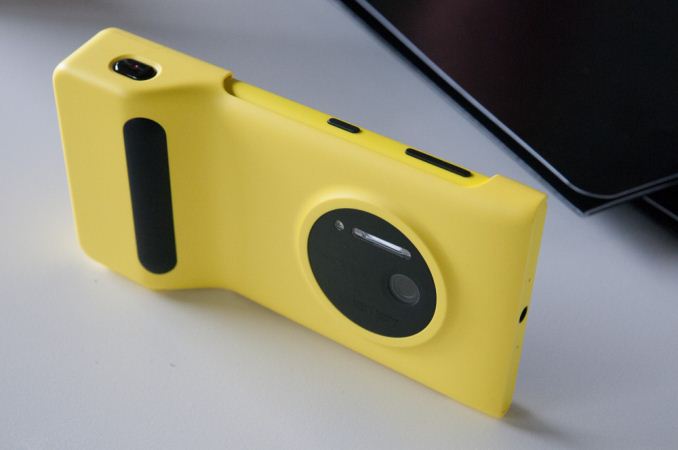
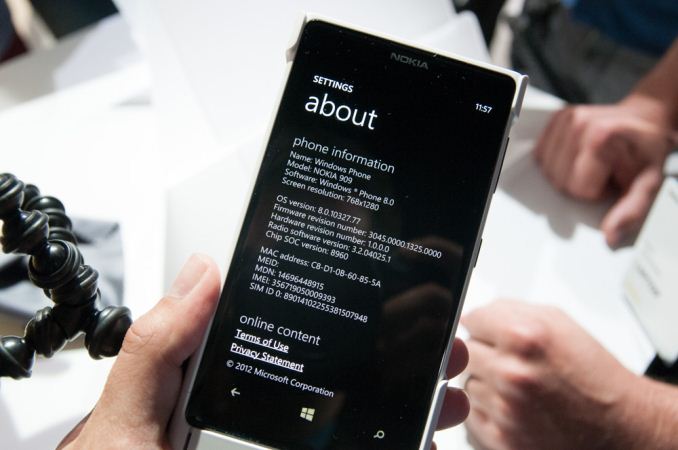
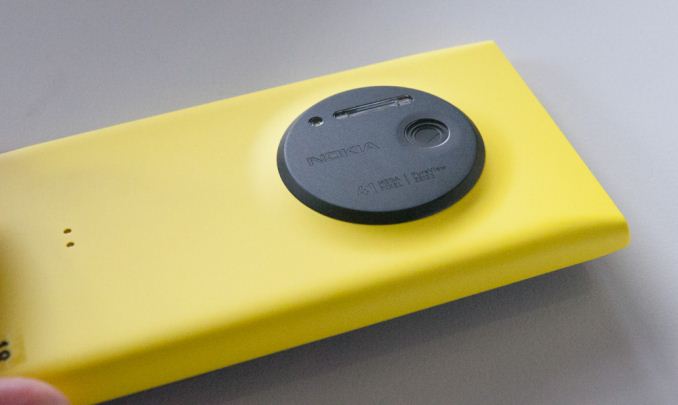
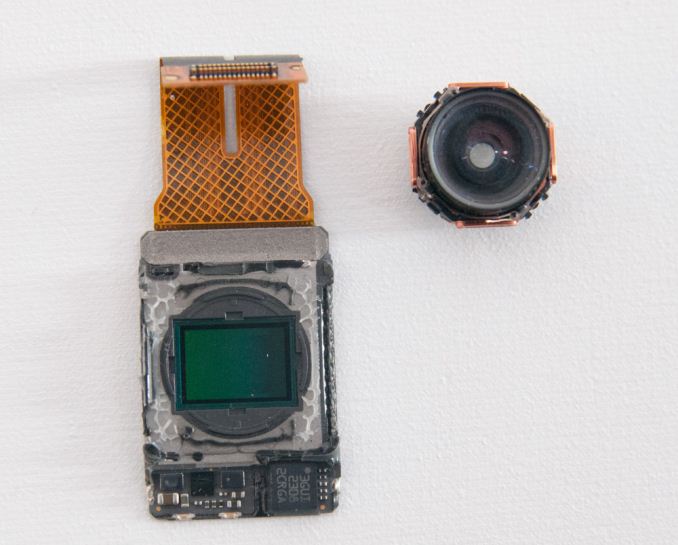
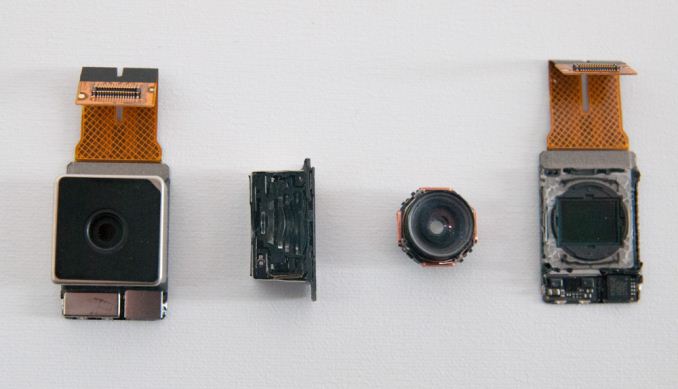
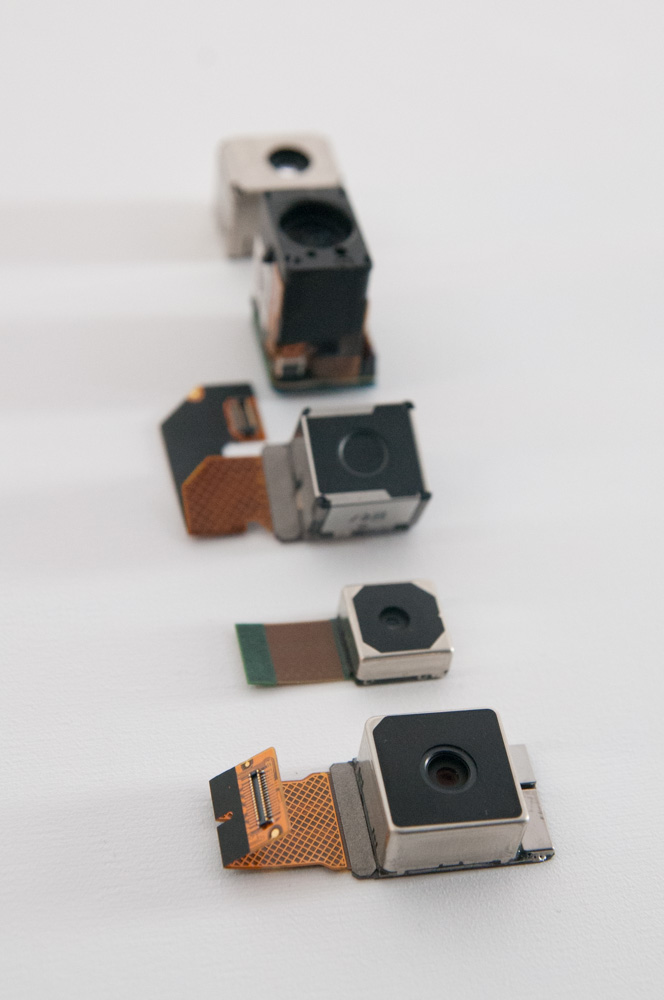
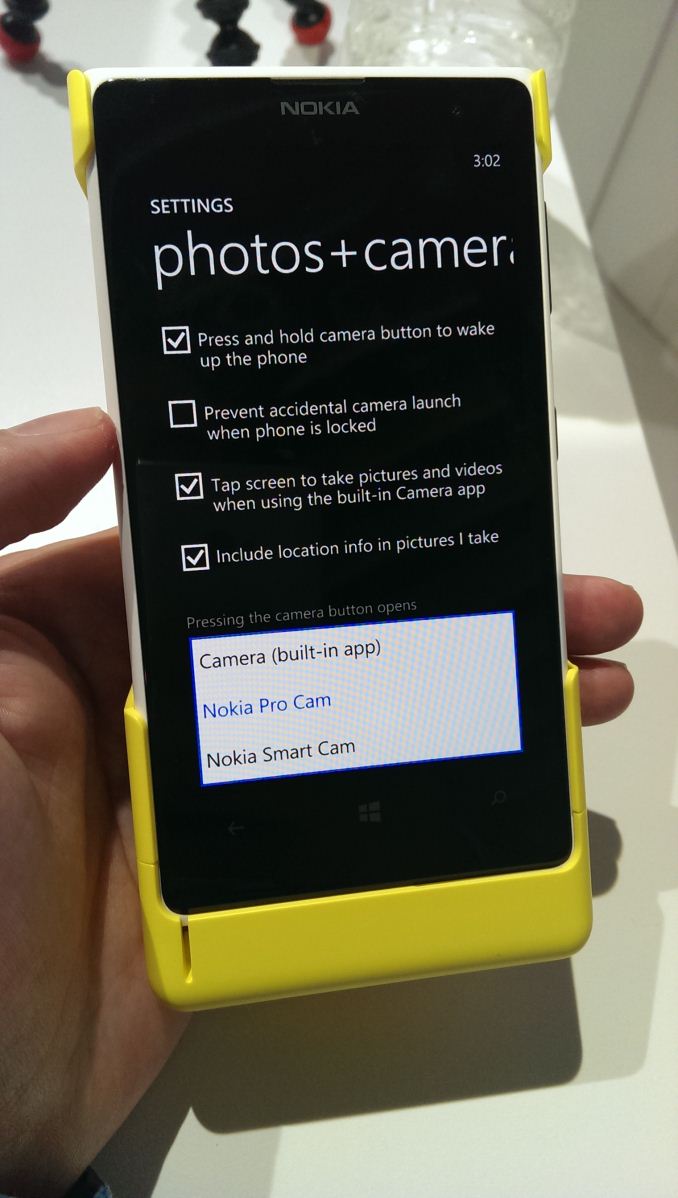
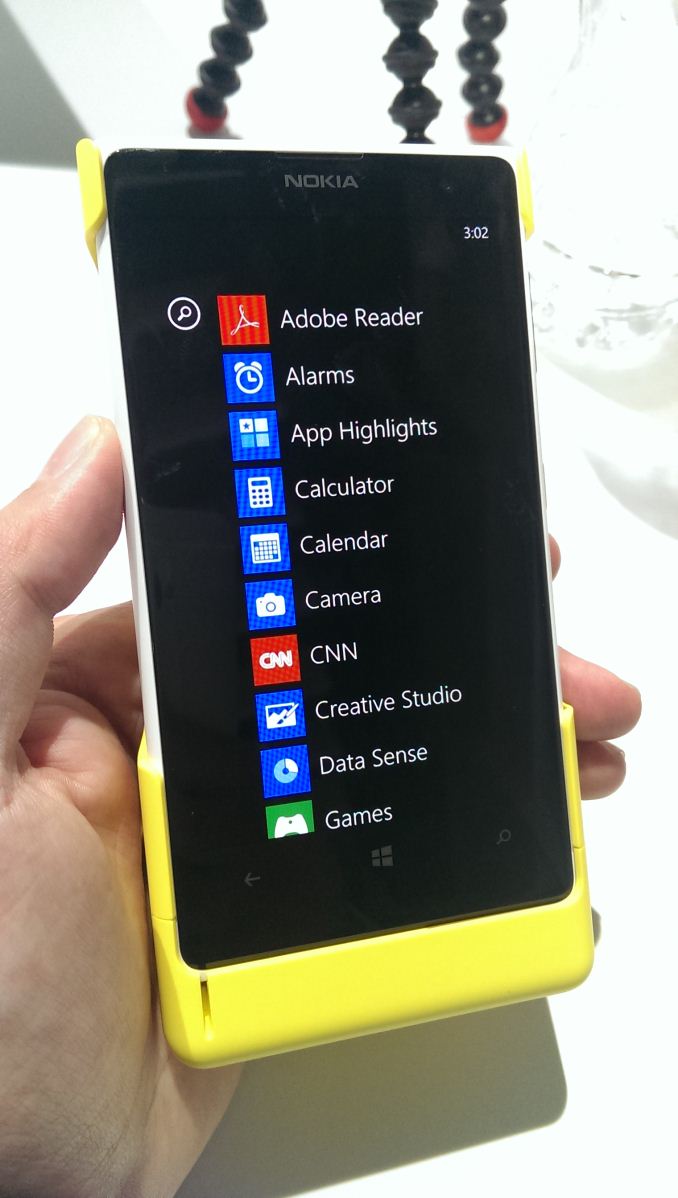
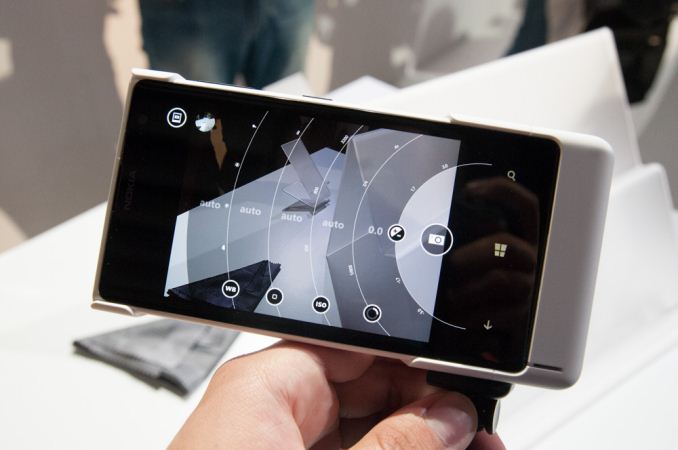
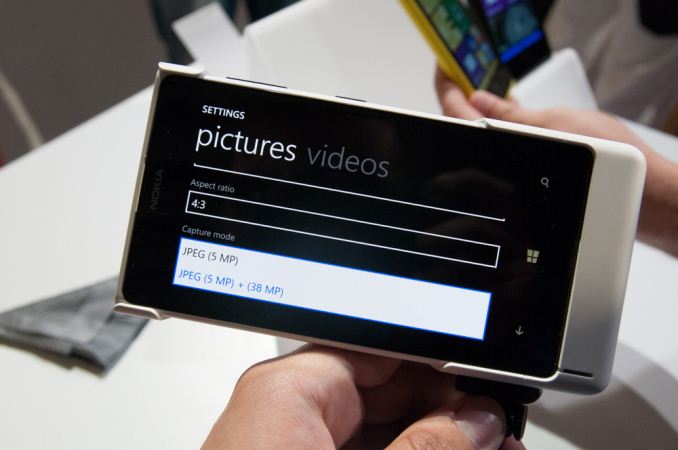
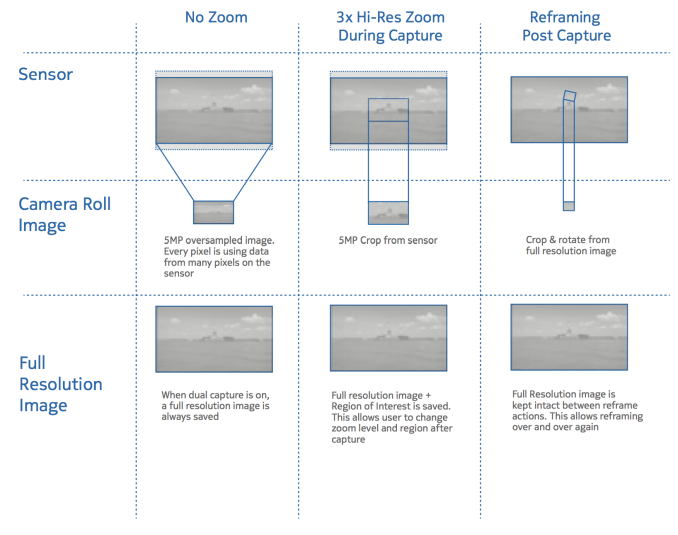

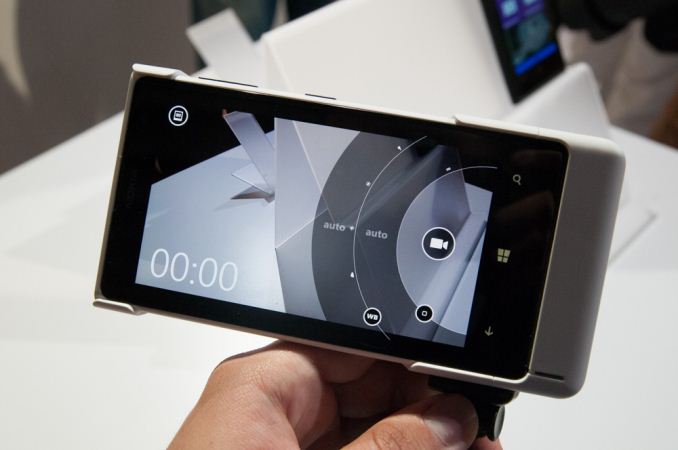
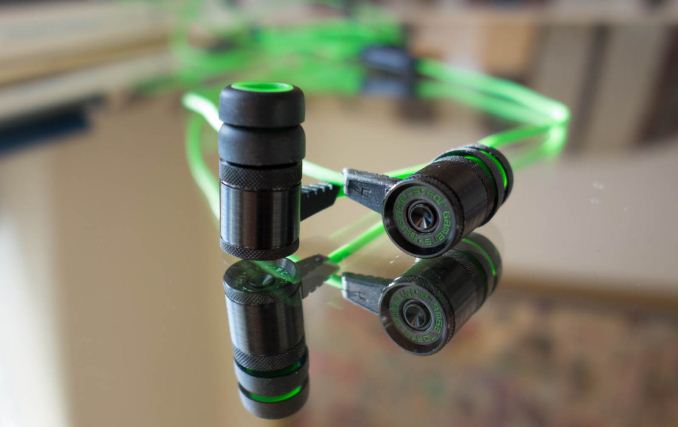




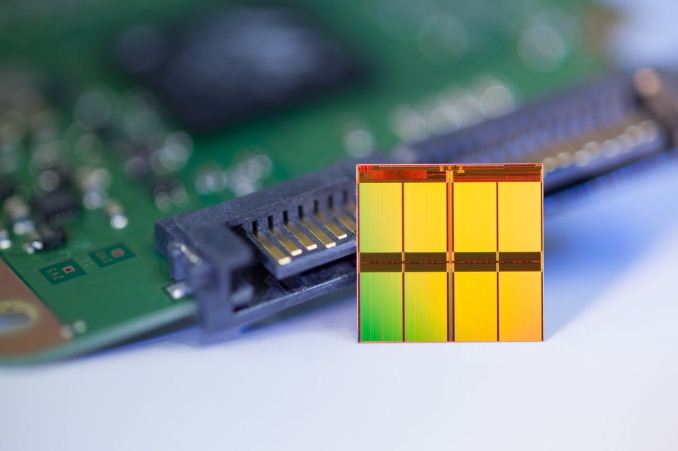

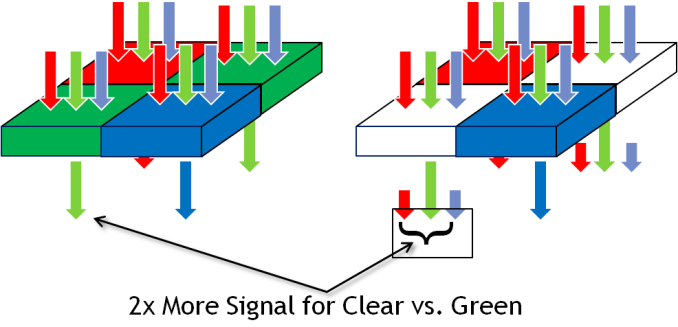
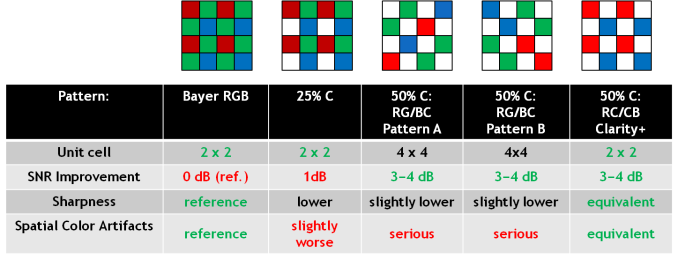
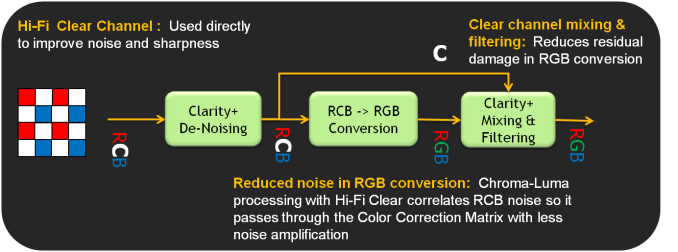

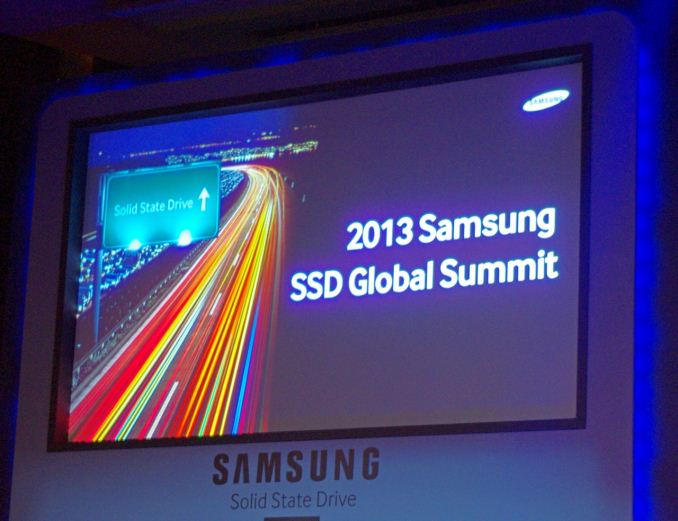







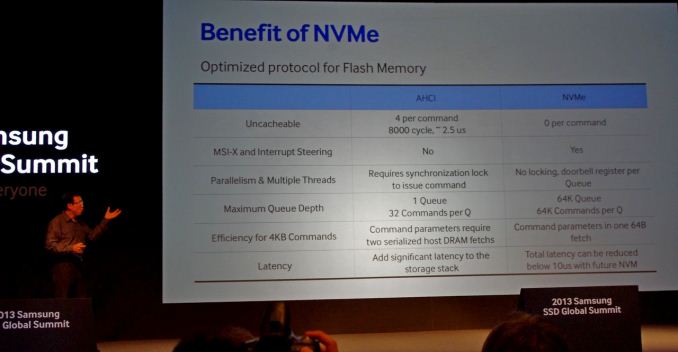
















Bookmarks